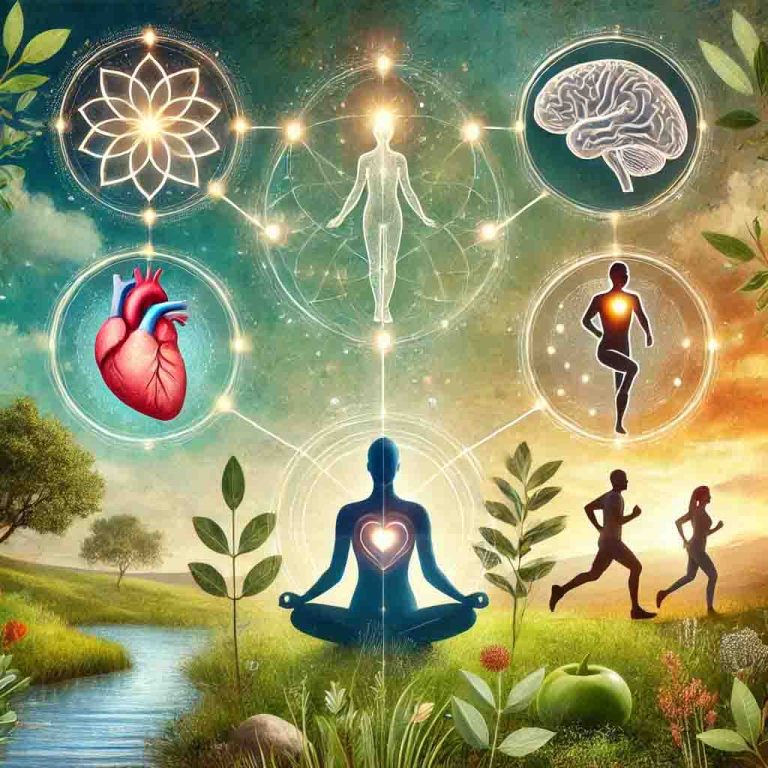15 Essential Yoga Elements for Beginners: The Complete Guide
Each of the yoga elements for beginners contributes something unique to your journey. Whether it’s the mindful breath control of Pranayama, the ethical living of Yamas, or the ultimate goal of spiritual awakening through Samadhi, these practices work together to create harmony between body, mind, and spirit. Yoga teaches us to be both strong and flexible, both disciplined and compassionate, helping us grow not just on the mat but in everyday life.
When most people think of yoga, they picture physical postures like Downward Dog or Tree Pose. But yoga is much more than just exercise—it’s a holistic practice that weaves together physical, mental, and spiritual well-being. From building flexibility and strength to cultivating mindfulness and self-realization, yoga offers a path to balanced living that touches every aspect of life.
In this post, we’ll explore the 15 key aspects of yoga, from the foundational physical postures (Asanas) to the deeper meditative practices, and even the guiding principles of yogic living. Whether you’re just starting out or deepening your practice, this guide will offer actionable insights and practical tips to help you integrate yoga into your daily life and move closer to balance and harmony.
1. Asanas: Foundational Postures for Beginners
Asanas are the core of yoga practice, the physical postures that connect the body and mind. These poses help you develop strength, flexibility, and balance. But it’s not just about the physical benefits—each pose also teaches mindfulness and patience. For example, Downward Dog (Adho Mukha Svanasana) is a great stretch for your hamstrings, but it also helps calm your mind and improve focus. Tree Pose (Vrksasana) challenges your balance and encourages stability, both physically and mentally.
The beauty of asanas lies in their duality—every movement is a blend of strength and ease, grounding you while allowing your body to release tension. With regular practice, asanas enhance body awareness and provide a deeper connection between your physical and mental states. Whether you’re a beginner or experienced, asanas allow you to explore the subtle energy shifts within your body and mind, bringing harmony to both.
Actionable Idea:
Choose one foundational yoga pose, such as Downward Dog or Warrior II, and practice it for 5 minutes each day. Focus on your breath and alignment, paying attention to how your body feels in the posture. This daily commitment will not only build strength but also enhance your focus and presence in the pose.
Want to learn more about the transformative power of yoga postures? Check out our in-depth article (coming soon) on how to master the most effective asanas for flexibility, strength, and mindfulness.
2. Pranayama: Breathwork for Yoga Beginners

Pranayama is all about harnessing the power of breath to control your life force, or prana. It’s amazing how something as simple as breathing can have such a profound impact on your body and mind. Techniques like Ujjayi Breath (also known as ocean breath) not only calm your nervous system but also help center your thoughts. Another effective practice, Nadi Shodhana (Alternate Nostril Breathing), helps balance the energy between the right and left sides of your body, creating a sense of internal harmony.
Breathwork goes beyond just calming you down—certain techniques, like Breath of Fire, can energize you and improve your focus. By mastering pranayama, you tap into the natural rhythm of your breath to influence your overall well-being. Whether you want to reduce stress, boost your energy, or enhance your focus, pranayama provides powerful tools to shift your mental and physical state.
Actionable Idea:
Try Ujjayi Breath for 3-5 minutes each morning. Breathe deeply through your nose while slightly constricting the back of your throat, creating a soothing ocean-like sound. This technique will help you start your day with calmness and mental clarity.
Curious to dive deeper into breath control? Our guide on pranayama will take you through the best techniques to manage stress, increase energy, and find inner peace.
3. Dhyana: Meditation As a core yoga element
Dhyana, or meditation, is one of the deeper practices in yoga. It’s not just about sitting quietly—it’s about focusing the mind and cultivating mindfulness. Meditation is a powerful tool for reducing stress, increasing mental clarity, and even boosting creativity. By sitting in stillness, you allow your thoughts to flow without attachment, creating space for deeper insights.
Mindfulness meditation focuses on observing the present moment, while Transcendental Meditation uses a mantra to quiet the mind. Both can have transformative effects on your emotional well-being. The key to meditation is consistency—it’s a skill that develops over time and rewards you with greater mental clarity and emotional resilience.
Actionable Idea:
Start with a simple 5-minute mindfulness meditation. Sit comfortably, close your eyes, and focus on your breath. If your mind starts to wander, gently guide your attention back to your breath. Over time, this practice will sharpen your focus and calm your mind.
Ready to explore meditation further? Learn about different meditation techniques and how they can improve your emotional well-being in our in-depth article (coming soon) on Dhyana.
4. Yamas: Ethical Foundations for Beginners

Yamas are the ethical guidelines in yoga, offering principles for living in harmony with others and ourselves. The first Yama, Ahimsa (non-violence), teaches kindness and compassion, not just in action but in thought. Satya (truthfulness) asks us to live with honesty and integrity, while Asteya (non-stealing) reminds us to respect other people’s time, energy, and resources.
These ethical principles create a foundation for mindful living. They aren’t just abstract ideas—they’re practical tools for living more compassionately and with greater self-awareness. By incorporating the Yamas into daily life, you align your actions with your values, creating peace within yourself and your relationships.
Actionable Idea:
Focus on practicing Ahimsa for one week. Pay attention to how you speak to yourself and others. When you notice negative self-talk or judgment, gently shift to more compassionate thoughts. This practice will help cultivate kindness in your life.
Interested in exploring ethical living through yoga? Our in-depth article here on the Yamas will show you how to integrate these powerful principles into your daily life.
5. Niyamas: Inner Disciplines to Support Practice
While the Yamas are about how we interact with the world, the Niyamas focus on self-discipline and inner growth. Saucha (purity) encourages cleanliness not only in your physical surroundings but also in your thoughts. Santosha (contentment) reminds us to find happiness in the present, rather than constantly seeking more. Tapas (discipline) challenges us to stay committed to our practice, even when it’s hard.
The Niyamas offer guidance for cultivating a peaceful, focused inner world. By integrating them into your life, you’ll nurture personal growth, mental clarity, and a deep sense of contentment. The Niyamas help build resilience, discipline, and emotional well-being, allowing you to navigate life’s challenges with grace.
Actionable Idea:
Spend the next week practicing Santosha by writing down three things you are grateful for each day. This practice will shift your focus to the present and help you cultivate a sense of contentment in your life.
Want to grow your inner discipline? Our in-depth article on the 5 Niyamas: Personal Disciplines for a Transformative Yoga Practice will guide you through personal growth practices that foster balance and resilience.
6. Yoga Nidra: Deep Rest for Beginners
Yoga Nidra is a practice of deep relaxation, often referred to as “yogic sleep.” It’s a state where you hover between being awake and asleep, allowing your body and mind to experience profound rest. During Yoga Nidra, you are guided through a series of body scans and breath awareness exercises, helping to release tension and reduce stress.
The benefits of Yoga Nidra extend beyond relaxation—it’s a powerful way to restore energy, improve sleep quality, and even access deeper levels of consciousness. This practice is perfect for anyone who needs to recharge mentally and physically, offering a restorative break from the hustle of daily life.
Actionable Idea:
Try a 10-minute guided Yoga Nidra session before bed. Lie down in a comfortable position, close your eyes, and follow the instructions to relax your body and calm your mind. This will help improve your sleep and reduce stress.
Curious about the deeper benefits of relaxation? Learn how to practice Yoga Nidra and discover its full benefits in our detailed guide (coming soon).
7. Mantras: Sound and Vibrational Focus

Mantras are sacred sounds or phrases that help focus the mind and connect to a deeper spiritual practice. Whether it’s the simple “Om” or the Gayatri Mantra, chanting these sounds helps ground the mind and body, creating a sense of unity. The vibrations from mantras can calm the nervous system and elevate your energy.
Chanting mantras is a powerful way to enhance meditation, deepen focus, and access a state of calm. It can also help align the chakras, improve concentration, and bring a greater sense of connection to the present moment. The repetition of a mantra allows the mind to settle into stillness, promoting mental clarity and spiritual growth.
Actionable Idea:
Begin your next yoga or meditation session by chanting “Om” three times. Focus on the sound and its vibrations, feeling how it resonates through your body. This will help ground your energy and deepen your sense of presence.
Want to learn more about the power of sound in yoga? Check out our in-depth article (coming soon) on mantras and their impact on spiritual growth.
8. Kundalini: Awakening Spiritual Energy

Kundalini yoga is a dynamic practice focused on awakening dormant energy at the base of the spine, often described as a coiled serpent. Through specific breathwork, postures, and meditation, this energy is said to rise through the chakras, leading to heightened consciousness. Breath of Fire is one of the key techniques used in Kundalini, where you take rapid, rhythmic breaths that invigorate both body and mind.
Kundalini yoga is a deeply spiritual practice that challenges the physical and emotional self, leading to profound personal transformation. By tapping into this powerful energy, you can unlock greater awareness, creativity, and mental clarity.
Actionable Idea:
Start by practicing Breath of Fire for 1-2 minutes each morning. Sit comfortably, close your eyes, and rapidly inhale and exhale through your nose, feeling the energy build in your body. This practice will energize you and prepare your mind for the day.
Curious about unlocking spiritual energy? Read our in-depth guide (coming soon) on Kundalini yoga and how to awaken your inner power.
9. Chakras: Energy Alignment for Wellness

The chakras are seven energy centers that align along the spine, each corresponding to different aspects of physical, emotional, and spiritual well-being. The Root Chakra represents grounding and stability, while the Heart Chakra governs love and compassion. Balancing the chakras can lead to a sense of harmony in your body and mind, allowing energy to flow freely.
Practicing chakra balancing through yoga poses, breathwork, and meditation helps to align your energy and restore balance. When the chakras are balanced, you experience greater emotional stability, physical health, and spiritual awareness.
Actionable Idea:
Focus on balancing your Root Chakra by practicing Mountain Pose. As you stand tall, visualize a red light glowing at the base of your spine, grounding you to the earth. Hold this pose for 5 breaths, feeling stability and strength.
Want to explore chakra balancing? Our detailed guide (coming soon) on chakras will help you understand how to align your energy for better well-being.
10. Bandhas: Energy Locks for Stability
Bandhas are subtle energy locks used in yoga to control the flow of prana (life force) within the body. There are three main Bandhas: Mula Bandha (Root Lock), Uddiyana Bandha (Abdominal Lock), and Jalandhara Bandha (Chin Lock). By engaging specific muscles, you can direct energy throughout your body, stabilizing your core and increasing mental focus. These locks create internal heat and awaken dormant energy, supporting both physical strength and spiritual growth.
Bandhas work alongside breath control and postures to deepen your practice and enhance energy flow. When performed correctly, they help build inner stability and balance while heightening concentration. Practicing Bandhas regularly can also amplify the effects of meditation and pranayama, allowing you to feel more centered and grounded in your daily life.
Actionable Idea:
Try Mula Bandha during your next yoga session. Engage the muscles of your pelvic floor (as if stopping the flow of urine) and hold this lock while breathing deeply. Notice how this subtle engagement strengthens your core and enhances your focus.
Want to learn more about harnessing your life force? Check out our in-depth article (coming soon) on the power of Bandhas and how to integrate them into your practice for energy control and balance.
11. Pratyahara: Withdrawing the Senses
Pratyahara is often described as the bridge between external and internal yoga practices. It’s the process of withdrawing your senses from external stimuli, allowing you to focus inward. This practice is key for deepening concentration and developing self-awareness. By detaching from distractions, you can explore your inner world more fully and reach deeper states of meditation.
One effective method for practicing Pratyahara is Candle Gazing (Trataka). By focusing solely on the flicker of a candle, you’re able to tune out external noise and direct your awareness inward. This practice sharpens mental focus and prepares you for meditation, reducing mental chatter and creating a sense of calm.
Actionable Idea:
Try Candle Gazing for 5 minutes. Light a candle in a quiet room, sit comfortably, and focus on the flame. If your thoughts start to wander, gently bring your attention back to the candle. This practice will help you cultivate mental clarity and sharpen your focus.
Ready to develop inner focus? Explore our detailed guide (coming soon) on Pratyahara to learn how sense withdrawal can enhance self-awareness and deepen your yoga practice.
12. Dharana: The Power of Concentration
Dharana is the practice of deep concentration and one of the final steps on the path to meditation. It involves focusing the mind on a single object, such as a candle flame, mantra, or breath, without allowing distractions to pull you away. Over time, Dharana builds mental discipline, allowing you to stay focused for longer periods and calm your mind.
By practicing Dharana, you can develop sharper mental clarity, reduce stress, and improve your ability to concentrate on tasks both on and off the yoga mat. This heightened focus is essential for meditation, as it prepares the mind for deeper states of stillness and self-reflection.
Actionable Idea:
In your next meditation session, focus on a single point, such as your breath or a sound, for 5 minutes. If your mind starts to wander, gently guide it back to your focus. With consistent practice, you’ll notice improved mental clarity and concentration.
Want to strengthen your focus? Dive into our comprehensive article (coming soon) on Dharana and learn how to build concentration through yoga and meditation.
13. Samadhi: Union and Self-Realization
Samadhi is the ultimate goal of yoga: complete union with universal consciousness. It represents a state of enlightenment where the individual ego dissolves, and one experiences pure awareness. In Samadhi, the practitioner reaches a state of profound connection with the present moment, free from distractions and mental disturbances.
While Samadhi may seem like a distant goal, the journey toward it is filled with moments of self-discovery and growth. Each yoga practice, meditation session, and mindful breath brings you one step closer to this state of inner peace and unity. It’s not something you can force—it happens naturally through dedicated practice and mindful living.
Actionable Idea:
Dedicate time each day to meditate in silence for at least 10 minutes, focusing solely on your breath. With time, you may begin to experience glimpses of deeper inner stillness that lead you toward Samadhi.
Curious about the spiritual journey of yoga? Our in-depth guide (coming soon) on Samadhi explores the path to self-realization and how you can begin to experience moments of enlightenment.
14. Ahara & Vihara: Yogic Diet and Lifestyle

Ahara (diet) and Vihara (lifestyle) are essential components of a yogic lifestyle. Ahara encourages a sattvic diet—fresh, plant-based foods that nourish both body and mind. This way of eating emphasizes purity, simplicity, and mindfulness, helping you maintain physical health and mental clarity. Vihara, on the other hand, involves finding balance in your day-to-day activities, ensuring that your lifestyle aligns with the principles of yoga.
Practicing mindful eating and leading a balanced life helps bring harmony to your body and mind. By incorporating more sattvic foods like fruits, vegetables, and whole grains, and creating routines that balance work, rest, and play, you enhance your overall well-being. This holistic approach to diet and lifestyle is a natural extension of the yogic path.
Actionable Idea:
For one week, try incorporating more fresh, plant-based foods into your meals. Focus on eating mindfully—take the time to enjoy each bite without distractions. Notice how this change makes you feel both physically and mentally.
Interested in living a yogic lifestyle? Our in-depth article (coming soon) on Ahara and Vihara will guide you through creating a balanced diet and lifestyle in alignment with yogic principles.
15. Sthira and Sukha: Balance Between Effort and Ease

Sthira and Sukha represent the balance between effort and ease in yoga, and they apply to life as well. Sthira refers to steadiness and strength, while Sukha means ease and comfort. Yoga teaches us to maintain this balance—whether you’re holding Warrior II or breathing deeply in a restorative pose, the key is to stay stable without straining, and relaxed without collapsing.
In yoga, you need both effort and ease to find the “sweet spot” in each posture. By learning to balance these qualities on the mat, you’ll find yourself more able to handle life’s challenges with both determination and grace. This balance helps cultivate patience, resilience, and mindfulness.
Actionable Idea:
During your next yoga session, pay attention to how much effort you’re putting into each pose. Are you holding tension where you don’t need to? Try softening into the pose while maintaining strength, allowing both Sthira and Sukha to work together.
Want to explore the perfect balance in yoga and life? Our detailed article (coming soon) on Sthira and Sukha will help you find harmony between effort and ease, both on and off the mat.
FAQ: Yoga Elements for Beginners
What are the most important yoga elements for beginners?
The foundational elements include Asanas (poses), Pranayama (breath control), and Dhyana (meditation). These offer immediate physical and mental benefits.
How do I start incorporating yoga into daily life?
Begin with 5–10 minutes of movement or breathwork each morning. Consistency matters more than intensity.
Is yoga only physical, or are there mental and spiritual aspects?
Yoga includes physical, mental, and spiritual practices—like ethical principles (Yamas/Niyamas), meditation, and breathwork.
Do I need flexibility to start yoga?
Not at all. Flexibility improves over time. Start with beginner-friendly poses and focus on breath and alignment.
Conclusion: Integrating Yoga into Everyday Life
Yoga offers a comprehensive path to well-being, touching on physical, mental, and spiritual health. Each of these 15 essential elements brings something unique to your life—from the strength and flexibility of asanas to the deep inner peace found through meditation and breath control.
Whether you’re focused on mastering physical postures, exploring ethical living, or working toward spiritual enlightenment, yoga provides a holistic framework for personal growth. As you dive into each of these aspects, remember that yoga is a journey, not a destination. Take your time exploring the practices that resonate with you, and allow them to enrich your life both on and off the mat. Whether you’re just starting or deepening your practice, the path to balance and harmony in yoga is always evolving.
Ready to dive deeper into yoga? Explore our series of in-depth articles covering each of the 15 essential elements in detail, and take your practice to the next level.







